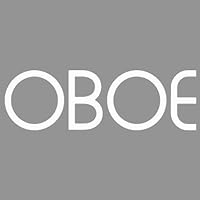When it comes to architectural work, having the right laptop can make all the difference in your productivity and efficiency. Whether you’re designing intricate structures or rendering complex models, a laptop with the right specifications can help you bring your ideas to life smoothly and effortlessly. In this article, we will guide you through the essential factors to consider when creating an optimal laptop spec list for architects.
Key Takeaways:
- Choosing a laptop with high processing power, sufficient RAM, and a dedicated graphics card is crucial for optimal performance.
- Consider laptops with a portable design and a high-resolution display for on-the-go work without compromising on visuals.
- Ample storage capacity, multiple connectivity options, and long battery life are important for seamless architectural workflows.
- Ensure compatibility with architecture software, strong connectivity, and ergonomic design to enhance your overall experience.
- Set a budget and find a laptop that offers the best value for money while meeting your specific architectural needs.
Architecture Laptop Specifications for Performance
To ensure optimal performance in your architectural work, it is crucial to invest in a laptop with high processing power and exceptional specifications. By selecting the right architecture laptop specifications, you can enhance your productivity, seamlessly handle complex tasks, and achieve fast rendering times. Look for the following key specifications when choosing a high-performance laptop for architects:
- Processor: Opt for a laptop with at least an Intel Core i7 or AMD Ryzen 7 processor. These processors provide excellent performance and ensure smooth multitasking capabilities.
- Memory (RAM): Aim for a minimum of 16GB RAM. This ample memory capacity allows you to run multiple design and rendering software simultaneously without any lag or performance issues.
- Graphics Card: Consider laptops with a dedicated graphics card featuring at least 4GB VRAM. A powerful graphics card enables seamless visualization, smooth rendering, and accurate representation of your architectural designs.
By selecting a laptop with these architecture laptop specifications, you can unleash your full creative potential, work efficiently, and deliver outstanding results. Take a look at the table below for a comparison of some top-performing laptops for architects:
| Laptop | Processor | RAM | Graphics Card |
| HP Zbook Studio | Intel Core i9 | 64GB | 8GB VRAM |
| DELL XPS | Intel Core i7 | 16GB | 4GB VRAM |
| Lenovo Ideapad | Intel Core i7 | 16GB | 4GB VRAM |
These laptops offer superior architecture laptop specifications for performance, enabling architects like you to handle resource-intensive architectural software, render designs effortlessly, and bring your creative visions to life. Consider their specifications, compare them based on your specific requirements, and choose the laptop that suits your budget and workflow needs.
With a high-performance laptop tailored to meet your architectural demands, you can push the boundaries of your design capabilities and streamline your workflow. Now that you have the architecture laptop specifications for performance, let’s explore other essential factors to consider when choosing the perfect laptop for your architectural endeavors. By selecting the best laptop that combines power, portability, storage, and other critical features, you can optimize your productivity and thrive in the world of architecture.
Portability and Display Considerations
When it comes to choosing a laptop for your architectural work, portability and display quality are two important considerations that can greatly impact your productivity. As an architect, you’re often on the go, so having a laptop that is lightweight and easy to carry is essential. However, you also need a screen that provides clear and accurate visuals for your architectural designs. Let’s dive into the key factors to consider when it comes to portability and display:
Screen Size
The ideal screen size for architects is between 14 to 15.6 inches. This range provides a good balance between portability and screen real estate. It’s compact enough for you to carry around comfortably while still offering enough space to work on detailed architectural designs. Whether you’re working on floor plans, 3D modeling, or rendering, having a screen that gives you enough room to visualize your designs is crucial.
Display Resolution
The display resolution of your laptop plays a significant role in ensuring accurate visualization of your architectural designs. Opt for a laptop with at least Full HD resolution (1920 x 1080) or consider going for a higher resolution like 4K if you want to experience stunningly detailed visuals. A high-resolution display allows you to see the intricate details of your designs, ensuring that you can make precise adjustments and present your work with clarity.
Top Laptops for Architects with Portability and Display Considerations
| Laptop Model | Screen Size | Display Resolution | Price |
| 1. HP Spectre x360 | 15.6 inches | 4K UHD | $1,599 |
| 2. Dell XPS 15 | 15.6 inches | 4K UHD | $1,699 |
| 3. Lenovo ThinkPad X1 Carbon | 14 inches | Full HD or 4K UHD | $1,579 |
These top laptops offer the perfect combination of portability and display quality. They are designed to meet the needs of architects who are constantly on the move, ensuring that you can work efficiently without compromising on the visual clarity of your designs.
With the right laptop that offers portability and an excellent display, you can unleash your creativity and bring your architectural visions to life, whether you’re in the office, on-site, or traveling.
Storage Capacity and Connectivity Options
As an architect, dealing with large file sizes is a daily challenge. That’s why ample storage capacity is crucial when selecting a professional laptop for architects. Aim for a laptop with at least 512GB solid-state drive (SSD) storage. This will not only provide you with fast data access and transfer speeds but also ensure that you have enough space to store your architectural models, designs, and other project files.
In addition to storage capacity, connectivity options are equally important for architects who require powerful laptops for architectural modeling. Look for laptops that offer multiple USB ports, an SD card reader, and Thunderbolt 3 ports. These connectivity options will allow you to seamlessly connect external devices and peripherals such as drawing tablets, external hard drives, and high-resolution monitors.
Having multiple USB ports ensures that you can connect and transfer data from multiple devices simultaneously, eliminating the need for additional dongles or hubs. An SD card reader is particularly useful for architects who frequently work with photography or require easy access to project files stored on SD cards. Thunderbolt 3 ports, on the other hand, provide lightning-fast data transfer speeds and the ability to connect to high-resolution displays, making them ideal for architects working with 3D modeling and rendering software.
Recommended Specifications for Storage Capacity and Connectivity Options
| Storage Capacity | Connectivity Options |
|---|---|
| 512GB SSD or higher | Multiple USB ports, SD card reader, Thunderbolt 3 ports |
Battery Life and Durability
As an architect, you often find yourself working on-site or in locations where access to power outlets may be limited. That’s why it’s crucial to invest in a laptop with a long battery life that can keep up with your demanding workload. Look for laptops that offer a minimum of 8 hours of battery life, ensuring uninterrupted work sessions even when you’re away from a power source.
In addition to battery life, durability is another essential factor to consider. Your laptop needs to withstand the rigors of daily use in architectural environments. Look for laptops with MIL-STD-810G certification, which guarantees durability and reliability in the face of drops, vibrations, and extreme temperatures.
When you have a laptop that combines long battery life and durability, you can confidently take on architectural projects without worrying about running out of power or the laptop succumbing to the demands of your work environment.
| Feature | Importance |
|---|---|
| Battery Life | High |
| Durability | High |
Operating System and Software Compatibility
When it comes to architecture software requirements, compatibility is key. As an architect, you rely on specific software like AutoCAD, Revit, or SketchUp to bring your designs to life. Therefore, it’s crucial to ensure that the laptop you choose is fully compatible with these industry-standard software applications.
Before making a purchase, carefully check the system requirements of the architecture software you use. Ensure that the laptop meets or exceeds the recommended specifications provided by the software developers. This will ensure smooth and efficient performance, enabling you to work seamlessly without any software-related limitations.
In addition to software compatibility, it’s important to consider the operating system preferences and compatibility with your software ecosystem. The most common operating systems for architects are Windows, macOS, and Linux. Each has its own strengths and software compatibility, so choose the one that aligns with your workflow and software requirements.
Recommended Laptops for Architectural Design
Here are a few recommended laptops that meet the architecture software requirements and provide excellent performance for architectural design and modeling:
| Laptop | Operating System |
|---|---|
| HP Spectre x360 | Windows 10 |
| Apple MacBook Pro | macOS |
| Dell XPS 15 | Windows 10 |
| Lenovo ThinkPad P1 | Windows 10 |
| Microsoft Surface Book 3 | Windows 10 |
These laptops offer powerful performance, high-resolution displays, and ample storage capacity to handle demanding architectural software and design tasks. Remember to choose the operating system and laptop that best suits your workflow and software compatibility needs.
By considering architecture software requirements and choosing a compatible and powerful laptop, you can elevate your architectural design capabilities and work efficiently on your projects.
Next, we’ll explore the importance of connectivity and networking capabilities for architects, ensuring seamless collaboration and efficient project management.
Connectivity and Networking Capabilities
Architects often collaborate with clients, colleagues, and consultants. When choosing a laptop for architectural design, it is essential to consider connectivity options that will ensure seamless communication and efficient data transfer.
Your laptop should have strong connectivity capabilities to meet the demands of collaborative work. Look for laptops that offer Wi-Fi 6 or Ethernet options, ensuring fast internet speeds and reliable network connections. This will enable you to quickly share files, access online resources, and communicate with project stakeholders.
Additionally, consider laptops with Bluetooth capabilities. With Bluetooth, you can effortlessly connect wireless mice, keyboards, and other peripherals. This allows for enhanced mobility and convenience, especially when working in different locations or on-site.
Stay connected and work collaboratively with the following laptops that provide excellent connectivity and networking capabilities:
| Laptop | Wi-Fi | Ethernet | Bluetooth |
| HP Zbook Studio G9 | Wi-Fi 6 | Yes | Yes |
| DELL XPS 15 | Wi-Fi 6 | Yes | Yes |
| Lenovo Thinkpad | Wi-Fi 6 | Yes | Yes |
Ergonomics and Design
Architects, like you, spend long hours working on their laptops, so it’s essential to prioritize ergonomics and design when choosing a professional laptop. The right laptop can significantly impact your comfort and productivity levels. Here are some key factors to consider:
Comfortable and Backlit Keyboards
Look for laptops with comfortable keyboards that provide a pleasant typing experience, allowing you to work efficiently without straining your fingers or wrists. Backlit keyboards are an added bonus, enabling you to work in low-light environments with ease.
Responsive Trackpads
A responsive trackpad is crucial for accurate cursor movement and precise control. Look for laptops with well-designed trackpads that offer smooth and reliable performance, enhancing your workflow and reducing frustration.
Efficient Heat Dissipation Systems
Extended hours of work can put a strain on your laptop’s cooling system, leading to overheating issues. To prevent this, consider laptops with efficient heat dissipation systems that can maintain stable operating temperatures even during demanding tasks. This ensures optimal performance and extends the lifespan of your laptop.
Visual Appeal and Build Quality
While aesthetics might not directly affect performance, a visually appealing laptop can contribute to a pleasant working environment. Select a laptop with a design that resonates with your personal style and preferences. Additionally, opt for laptops with solid build quality to withstand the rigors of everyday use.
| Key Features | Description |
|---|---|
| Comfortable and Backlit Keyboards | Enhance typing experience and allow you to work in low-light environments. |
| Responsive Trackpads | Ensure accurate cursor movement and precise control for seamless navigation. |
| Efficient Heat Dissipation Systems | Prevent overheating issues during prolonged use, ensuring optimal performance. |
| Visual Appeal and Build Quality | Provide a visually pleasing design with solid build quality for long-lasting durability. |
When choosing a laptop for architects, remember that ergonomics and design are just as important as technical specifications. Prioritizing these factors will ensure that you have a laptop that not only meets your professional needs but also enhances your overall working experience.
Price and Value for Money
When it comes to choosing the best laptop for architects, price is an important aspect to consider. Working within a budget doesn’t mean compromising on quality or performance. By evaluating the value for money offered by different laptops, you can find the perfect balance between affordability and functionality.
Here are a few key factors to keep in mind as you navigate through the options:
- Warranty: Look for laptops that come with a comprehensive warranty. This ensures that you are protected against any manufacturing defects or unforeseen issues that may arise.
- Customer support: Opt for a laptop from a brand that offers reliable customer support. A responsive and helpful customer service team can make a significant difference in resolving any concerns or technical issues you may encounter.
- Longevity: Consider the durability and longevity of the laptop before making a purchase. Investing in a laptop that will withstand the demands of your architectural work will save you from having to replace it in the near future.
By taking these factors into account, you can make an informed decision and choose a laptop that provides the best value for your money.
Remember, finding the top laptops for architects doesn’t always mean opting for the most expensive option. It’s about finding the right balance between price and performance to meet your specific architectural needs.
Now, let’s explore some of the best laptop options available for architects:
A Selection of Top Laptops for Architects:
| Laptop | Price Range | Key Features |
| 1. HP ZBook Studio G9 | $2,000-$3,000 | Workstation-grade performance, color-accurate display, durable construction |
| 2. Dell XPS 15 | $1,500-$2,500 | Powerful processor, high-resolution display, dedicated graphics card |
| 3. Apple MacBook Pro 15 | $2,000-$3,000 | Excellent performance, retina display, macOS ecosystem |
| 4. Lenovo ThinkPad P1 | $1,500-$3,000 | Reliable performance, NVIDIA Quadro graphics, robust security features |
These laptops offer a combination of performance, durability, and value that make them ideal for architects. However, it’s important to consider your specific requirements and budget to make the best decision.
Now that we’ve explored the crucial aspect of price and value for money, let’s move on to our final section and conclude our guide to finding the optimal laptop for architects.
Conclusion
Choosing the right laptop for architects is crucial to maximize productivity and deliver high-quality designs. By considering the architecture laptop specifications for performance, portability, storage, battery life, software compatibility, connectivity, ergonomics, and price, you can create an optimal laptop spec list that meets your specific architectural needs.
Invest in a high-quality laptop that will empower you to power through design and rendering tasks efficiently, unleashing your full architectural potential. With the best laptop for architects, you’ll experience seamless multitasking, fast rendering, and accurate visualization of architectural designs. The HP ZBook Studio G9 is our top recommendation. With a 16-inch WUXGA display, powerful Intel Core i7 or i9 processors, and NVIDIA RTX A500 graphics, it offers the performance and immersive experience needed for complex architectural software.
Remember to prioritize high processing power, at least 16GB RAM, dedicated graphics card with 4GB VRAM, a portable yet high-resolution display, ample storage capacity with fast SSD, long battery life, and durable build quality. Make sure your chosen operating system is compatible with the architecture software you use. Plus, strong connectivity options and ergonomic design play a vital role in enhancing comfort and productivity.
The value for money is also important, so set a budget and consider factors like warranty, customer support, and longevity. With a well-equipped laptop, you can effortlessly tackle architectural projects, collaborating with clients and colleagues, and bring your design visions to life.
Compare and view all the best HP architecture laptop





















